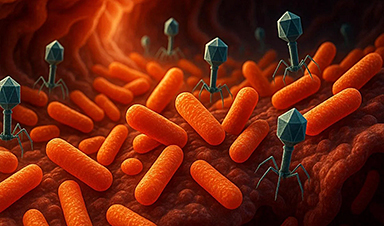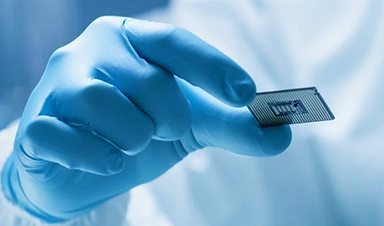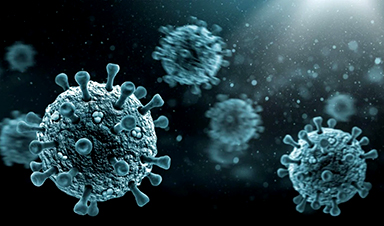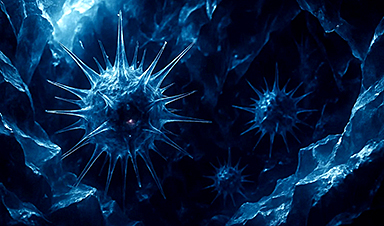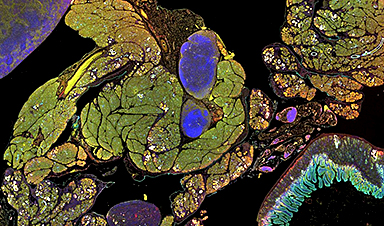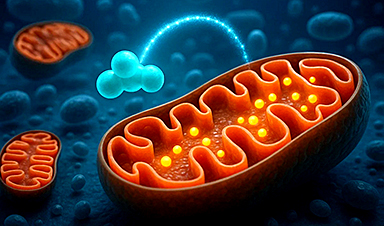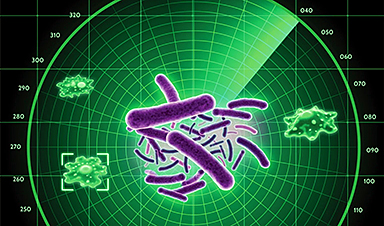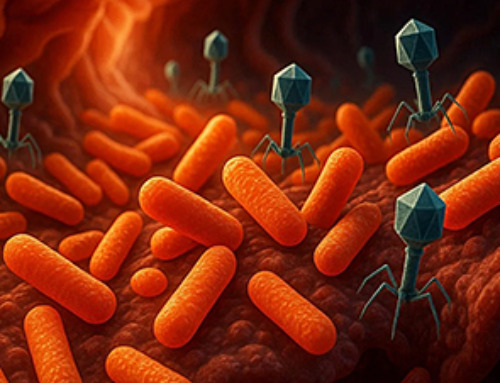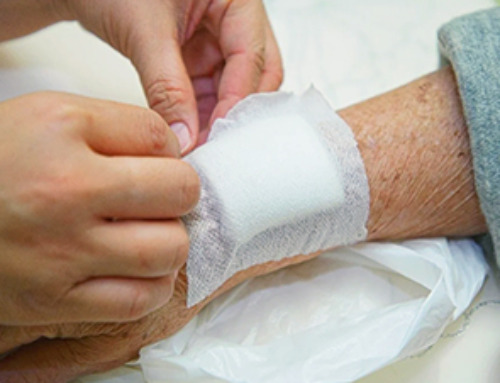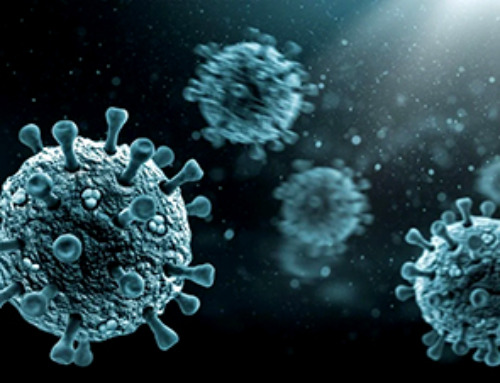With their high surface area and enhanced physicochemical properties, nanomaterials play a critical role in drug delivery, consumer products, and environmental technologies. However, their nanoscale dimensions enable interactions with cellular components in complex and sometimes unexpected ways, potentially inducing oxidative stress, inflammation, or bioaccumulation. As their use expands, understanding these risks through nanotoxicity testing becomes essential.1
Why Assess Nanotoxicity?
Assessing nanotoxicity helps ensure the safe use of nanomaterials while protecting human health and the environment. Nanomaterials can enter the body through inhalation, ingestion, or injection. Once inside, they may accumulate in organs and disrupt cellular functions. Their presence in cosmetics, pharmaceuticals, and household goods also raises concerns about environmental exposure. Reliable assessment methods help identify potential hazards before widespread use.2
Methods of Nanotoxicity Assessment
In Vitro Methods
In vitro methods are widely used to assess nanotoxicity through controlled experiments on cell cultures. Cytotoxicity assays such as MTT (tetrazolium-based assays) and LDH (lactate dehydrogenase) release assays evaluate cell viability and membrane integrity.3
Genotoxicity tests, including comet and micronucleus assays, examine DNA damage and chromosomal alterations caused by nanoparticle exposure. By exposing specific cell lines, such as epithelial cells that model the skin, lungs, or gastrointestinal tract, these methods provide critical insights into how nanomaterials interact with different biological barriers.3
For instance, Collins et al. provide key recommendations for conducting in vitro comet assays with mammalian cell cultures. They suggest using non-cytotoxic concentrations, defined as less than 20 % cell viability loss, and recommend concentrations below 100–150 μg/mL for non-cytotoxic nanomaterials.
The selection of cell lines should align with the target organ and exposure route, ensuring relevant biological insights. To capture the full spectrum of nanoparticle interactions, both short-term (2–3 hours) and long-term (24-hour) exposure studies are advised.
Additionally, distinguishing between direct DNA interactions and oxidative stress-induced genotoxicity remains a crucial consideration.4
In Vivo Methods
In vivo studies assess how nanomaterials behave in living organisms. Rodent models help researchers track bioaccumulation and long-term effects on organs like the liver, kidneys, and brain.3 These tests use exposure routes that mimic real-world scenarios, such as inhalation, ingestion, and injection.
While in vivo testing provides valuable data, ethical concerns and species differences highlight the need for alternatives. Regulatory efforts increasingly focus on reducing animal testing by improving in vitro and computational models.3, 5
Computational Methods
Computational toxicology applies in silico models to predict nanotoxicity by analyzing the physicochemical properties of nanoparticles. Techniques such as Quantitative Nanostructure-Toxicity Relationship (QNTR) and Quantitative Structure-Activity Relationship (QSAR) modeling rely on descriptors like particle size, surface charge, aggregation state, and solubility to estimate biological interactions and toxic potential.6
These models offer an efficient alternative to traditional toxicity assessments by reducing dependence on animal studies, minimizing costs, and enabling high-throughput screening. By incorporating data from in vitro experiments, bioinformatics, and machine learning algorithms, computational approaches refine toxicity predictions and enhance our understanding of nanoparticle behavior within biological systems.5
Surface Characterization Techniques
The size, shape, and surface chemistry of nanoparticles influence their interactions with biological systems. Several techniques help researchers analyze these properties:
Scanning Electron Microscopy (SEM): SEM provides high-resolution images of nanoparticles, allowing detailed analysis of their size, shape, and surface morphology. By scanning a focused electron beam across the sample surface, SEM generates images based on the interaction of electrons with the sample. This technique is especially useful for identifying surface features, defects, and coatings.7
Atomic Force Microscopy (AFM): AFM provides three-dimensional imaging and precise measurements of surface properties such as roughness, stiffness, and adhesion strength. Unlike SEM, AFM does not require extensive sample preparation and can operate under ambient or liquid conditions, preserving the native state of nanoparticles. This makes it particularly valuable for studying nanoparticle interactions with biological membranes and their penetration into cells. AFM also quantifies forces between nanoparticles and biological systems, providing insights into their physical interactions and toxicity mechanisms.7
X-Ray Photoelectron Spectroscopy (XPS):XPS is used to analyze the surface chemistry of nanoparticles, including their elemental composition, oxidation states, and surface coatings. This technique is highly sensitive to the outermost layers of nanoparticles, making it ideal for studying functional groups and ligands that influence toxicity.7
Torelli et al. developed an XPS data correction method for non-planar surfaces, improving accuracy when analyzing nanoparticles as small as 20 nm. Such refinements help predict how surface modifications affect biological interactions.8
Protocols for Nanotoxicity Testing
Standardized Guidelines
The OECD Sponsorship Programme has assessed various nanomaterials to refine test methodologies, while European initiatives like NANOHARMONY and Gov4Nano focus on standardizing protocols across different regulatory frameworks. These efforts aim to improve test reproducibility and promote global data acceptance under the Mutual Acceptance of Data (MAD) principle.9
Testing Procedures
Nanotoxicity assessments combine in vitro, in vivo, and computational approaches. Testing procedures vary based on exposure routes (oral, dermal, or inhalation) and duration (acute vs. chronic).10
Advanced in vitro assays measure cytotoxicity, oxidative stress, and DNA damage, while in vivo studies track bioaccumulation and organ-specific effects. Newer methods like microfluidic systems and co-culture models enhance test accuracy by mimicking real physiological conditions.10
What Does the Future of Nanotoxicity Testing Look Like?
Despite progress, testing nanotoxicity remains complex. Nanomaterials vary in size, shape, and surface chemistry, making it hard to develop universal protocols. A lack of standardization also leads to inconsistencies across studies.11
Future efforts will focus on integrating advanced technologies. Predictive in silico models and high-throughput in vitro systems will likely play a bigger role in screening nanomaterials. Organ-on-a-chip models could further improve accuracy by replicating human tissue environments.11
Reference and Further Readings
1. Savage, DT.; Hilt, JZ.; Dziubla, TD. (2019). In Vitro Methods for Assessing Nanoparticle Toxicity. Nanotoxicity: Methods and protocols. https://link.springer.com/protocol/10.1007/978-1-4939-8916-4_1
2. Huang, H.-J.; Lee, Y.-H.; Hsu, Y.-H.; Liao, C.-T.; Lin, Y.-F.; Chiu, H.-W. (2021). Current Strategies in Assessment of Nanotoxicity: Alternatives to in Vivo Animal Testing. International journal of molecular sciences. https://www.mdpi.com/1422-0067/22/8/4216
3. Roberto, MM.; Christofoletti, CA. (2019). How to Assess Nanomaterial Toxicity? An Environmental and Human Health Approach. [Online] IntechOpen. https://www.intechopen.com/chapters/68905
4. Collins, A.; El Yamani, N.; Dusinska, M. (2017). Sensitive Detection of DNA Oxidation Damage Induced by Nanomaterials. Free Radical Biology and Medicine. https://www.sciencedirect.com/science/article/pii/S089158491730062X
5. Budama-Kilinc, Y.; Cakir-Koc, R.; Zorlu, T.; Ozdemir, B.; Karavelioglu, Z.; Egil, AC., Kecel-Gunduz, S. (2018). Assessment of Nano-Toxicity and Safety Profiles of Silver Nanoparticles. [Online] IntechOpen. https://www.intechopen.com/chapters/60486
6. Fourches, D.; Pu, D.; Tassa, C.; Weissleder, R.; Shaw, SY.; Mumper, RJ. Tropsha, A. (2010). Quantitative Nanostructure− Activity Relationship Modeling. ACS nano. https://pubmed.ncbi.nlm.nih.gov/20857979/
7. Gunsolus, IL.; Haynes, CL. (2016). Analytical Aspects of Nanotoxicology. Analytical chemistry. https://pubs.acs.org/doi/full/10.1021/acs.analchem.5b04221
8. Torelli, MD.; Putans, RA.; Tan, Y.; Lohse, SE.; Murphy, CJ.; Hamers, RJ. (2015). Quantitative Determination of Ligand Densities on Nanomaterials by X-Ray Photoelectron Spectroscopy. ACS applied materials & interfaces. https://pubs.acs.org/doi/full/10.1021/am507300x
9. Krug, HF.; Nau, K. (2022). Methods and Protocols in Nanotoxicology. Frontiers Media. https://www.frontiersin.org/journals/toxicology/articles/10.3389/ftox.2022.1093765/full
10. Handy, RD.; van den Brink, N.; Chappell, M.; Mühling, M.; Behra, R.; Dušinská, M.; Simpson, P.; Ahtiainen, J.; Jha, A. N.; Seiter, J. (2012). Practical Considerations for Conducting Ecotoxicity Test Methods with Manufactured Nanomaterials: What Have We Learnt So Far? Ecotoxicology. https://link.springer.com/article/10.1007/s10646-012-0862-y
11. Patel, RJ.; Alexander, A.; Puri, A.; Chatterjee, B. (2021). Current Challenges and Future Needs for Nanotoxicity and Nanosafety Assessment. Nanotechnology in Medicine: Toxicity and Safety. https://onlinelibrary.wiley.com/doi/abs/10.1002/9781119769897.ch14
News
Scientists Flip a Gut Virus “Kill Switch” – Expose a Hidden Threat in Antibiotic Treatment
Scientists have long known that bacteriophages, viruses that infect bacteria, live in our gut, but exactly what they do has remained elusive. Researchers developed a clever mouse model that can temporarily eliminate these phages [...]
Enhanced Antibacterial Polylactic Acid-Curcumin Nanofibers for Wound Dressing
Background Wound healing is a complex physiological process that can be compromised by infection and impaired tissue regeneration. Conventional dressings, typically made from natural fibers such as cotton or linen, offer limited functionality. Nanofiber [...]
Global Nanomaterial Regulation: A Country-by-Country Comparison
Nanomaterials are materials with at least one dimension smaller than 100 nanometres (about 100,000 times thinner than a human hair). Because of their tiny size, they have unique properties that can be useful in [...]
Pandemic Potential: Scientists Discover 3 Hotspots of Deadly Emerging Disease in the US
Virginia Tech researchers discovered six new rodent carriers of hantavirus and identified U.S. hotspots, highlighting the virus’s adaptability and the impact of climate and ecology on its spread. Hantavirus recently drew public attention following reports [...]
Studies detail high rates of long COVID among healthcare, dental workers
Researchers have estimated approximately 8% of Americas have ever experienced long COVID, or lasting symptoms, following an acute COVID-19 infection. Now two recent international studies suggest that the percentage is much higher among healthcare workers [...]
Melting Arctic Ice May Unleash Ancient Deadly Diseases, Scientists Warn
Melting Arctic ice increases human and animal interactions, raising the risk of infectious disease spread. Researchers urge early intervention and surveillance. Climate change is opening new pathways for the spread of infectious diseases such [...]
Scientists May Have Found a Secret Weapon To Stop Pancreatic Cancer Before It Starts
Researchers at Cold Spring Harbor Laboratory have found that blocking the FGFR2 and EGFR genes can stop early-stage pancreatic cancer from progressing, offering a promising path toward prevention. Pancreatic cancer is expected to become [...]
Breakthrough Drug Restores Vision: Researchers Successfully Reverse Retinal Damage
Blocking the PROX1 protein allowed KAIST researchers to regenerate damaged retinas and restore vision in mice. Vision is one of the most important human senses, yet more than 300 million people around the world are at [...]
Differentiating cancerous and healthy cells through motion analysis
Researchers from Tokyo Metropolitan University have found that the motion of unlabeled cells can be used to tell whether they are cancerous or healthy. They observed malignant fibrosarcoma [...]
This Tiny Cellular Gate Could Be the Key to Curing Cancer – And Regrowing Hair
After more than five decades of mystery, scientists have finally unveiled the detailed structure and function of a long-theorized molecular machine in our mitochondria — the mitochondrial pyruvate carrier. This microscopic gatekeeper controls how [...]
Unlocking Vision’s Secrets: Researchers Reveal 3D Structure of Key Eye Protein
Researchers have uncovered the 3D structure of RBP3, a key protein in vision, revealing how it transports retinoids and fatty acids and how its dysfunction may lead to retinal diseases. Proteins play a critical [...]
5 Key Facts About Nanoplastics and How They Affect the Human Body
Nanoplastics are typically defined as plastic particles smaller than 1000 nanometers. These particles are increasingly being detected in human tissues: they can bypass biological barriers, accumulate in organs, and may influence health in ways [...]
Measles Is Back: Doctors Warn of Dangerous Surge Across the U.S.
Parents are encouraged to contact their pediatrician if their child has been exposed to measles or is showing symptoms. Pediatric infectious disease experts are emphasizing the critical importance of measles vaccination, as the highly [...]
AI at the Speed of Light: How Silicon Photonics Are Reinventing Hardware
A cutting-edge AI acceleration platform powered by light rather than electricity could revolutionize how AI is trained and deployed. Using photonic integrated circuits made from advanced III-V semiconductors, researchers have developed a system that vastly [...]
A Grain of Brain, 523 Million Synapses, Most Complicated Neuroscience Experiment Ever Attempted
A team of over 150 scientists has achieved what once seemed impossible: a complete wiring and activity map of a tiny section of a mammalian brain. This feat, part of the MICrONS Project, rivals [...]
The Secret “Radar” Bacteria Use To Outsmart Their Enemies
A chemical radar allows bacteria to sense and eliminate predators. Investigating how microorganisms communicate deepens our understanding of the complex ecological interactions that shape our environment is an area of key focus for the [...]

